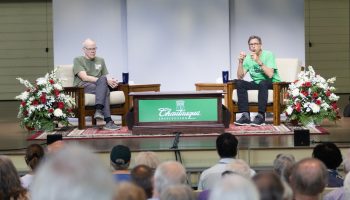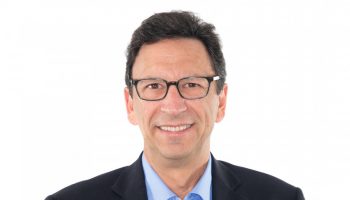ALTON NORTHUP
STAFF WRITER
Expert Bree Dietly wants Chautauquans to rethink how they recycle.
Dietly, principal of Breeze- way Consulting, a Massachusetts-based waste consultation firm, spoke about the history of recycling and best practices for waste disposal at Saturday’s Chautauqua Property Owners Association General Meeting in the Hall of Philosophy.
“We have more than 9,000 community recycling programs in this country,” she said. “There’s no reason why we should have 9,000 separate local recycling programs.”
To understand the modern recycling system, one must first understand the waste system it grew out of. In the 1970s, waste management programs varied by community due to a lack of federal regulations. With more than 25,000 open dumps in the country, legislators started to worry about the kind of waste accepted by landfills and its effects on the environment, particularly water. These concerns culminated in a mass overhaul of waste management in the United States. The most significant piece of legislation from the era was the Resource Conservation and Recovery Act of 1976, Dietly said, which placed solid waste regulation under federal guidelines. The 1984 Hazardous and Solid Waste Amendments phased out land disposal of hazardous waste and reduced the number of landfills operating in the country in an effort to consolidate waste programs and limit pollution, dramatically changing the way Americans handled waste.
This reduction left about 6,000 landfills operating in the country, Dietly said, and with that new scarcity of landfills came a concern over what should fill them. Communities started investigating new methods for disposal to lessen the stress on landfills, and from that, modern recycling was born.
However, much like the early decades of waste management, recycling pro- grams now fall under the purview of state and local governments. This system creates confusion over what can be recycled, Dietly said, and is the reason why de- spite 52% of packaging on the market considered recyclable, just 32% of Americans actually recycle.
Luckily, she said, Chautauqua has a robust recycling program through Casella Waste Systems’ facility in Jamestown, but it falls on Chautauquans to recycle the right things. Plastic drink bottles, milk jugs, yogurt cups, tubs and lids and sham- poo bottles can all be recycled in Chautauqua. Before placing items on the curb, Chautauquans should check to ensure all caps and lids are screwed on; items smaller than two inches are automatically sifted out of the recycling process. Recycling facilities prefer aluminum cans, No. 1 PETE plastic and No. 2 HDPE plastic bottles (deter- gent and milk jugs) the most when sorting recyclables.
“Those three components account for 10% of everything that goes into that berth and 42% of the revenue they make on it,” Dietly said. “That’s the money haul; that’s the stuff you want to make sure is in your recycling program.”
Still, those looking to recycle should look out for more than just plastic, which makes up just 12% of waste nationally. Office paper, newspaper, paper bags, magazines, mail, glass bottles, pickle jars, cans, aluminum foil, wax-free cardboard boxes and egg cartons can all be recycled in Chautauqua. Dietly said to make sure to clean and dry items before recycling, form loose aluminum sheets into a ball and avoid all plastic bags that may clog sifting machines. Dietly reminded Chautauquans that “reduce, reuse, recycle” is a hierarchy, and they should think about how the products they purchase will be disposed of later.
“There is a lot of potential in what you don’t recycle,” she said.
Dietly’s presentation was part of the larger CPOA meeting; on Saturday the group provided an overview of its initiatives and goals for the season. The most significant was the completion of an Economic Impact Study commissioned with the Institution, which measured property owners’ economic impact. The study found property owners are responsible for 27% of visitors to the Institution and 45.4% of philanthropy raised in 2019; they generate $37.9 million in annual economic impact in Chautauqua County.
“We truly are the Institu- tion’s endowment,” said CPOA President Erica Higbie.
Other green initiatives were also discussed. Since last year, the CPOA has increased the number of car chargers on the grounds from one to 10. Additionally, a multi-year plan to convert streetlights on the grounds to energy efficient LED lighting has been completed. A part of that plan was transferring the lights from National Grid to the Chautauqua Utility District, significantly reducing the energy needed to power the lights. The next goal for the CPOA is to apply to be an International Dark Sky Community. If accepted, Chautauqua would be the first community east of the Mississippi River to join the organization, which advocates for ending light pollution.




